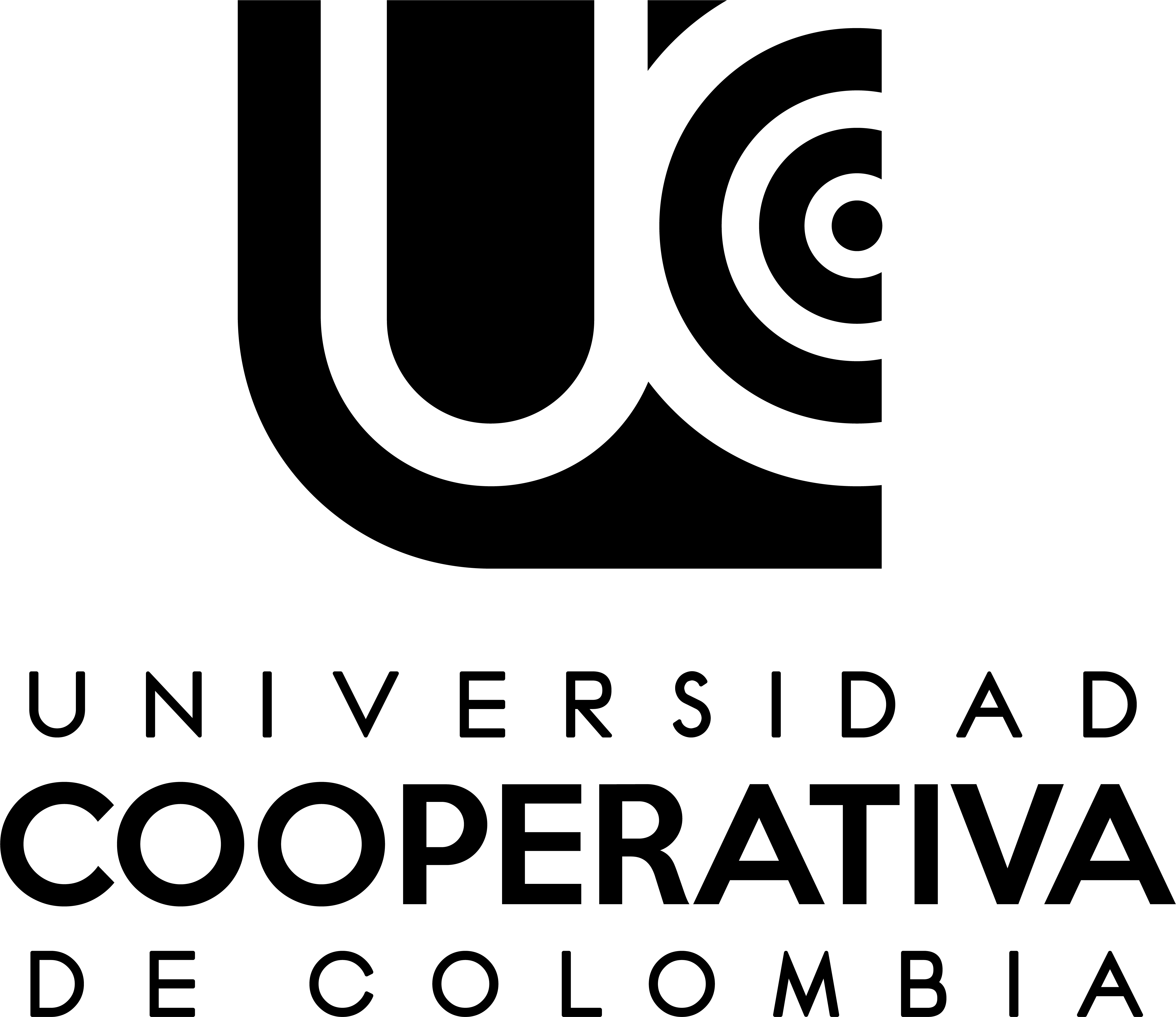Employability As A Complex Problem
Faculty of Engineering. Universidad Distrital Francisco José de Caldas, Bogota, Colombia.
email: lfhernandezc@correo.udisrital.edu.co
Faculty of Engineering. Universidad Distrital Francisco José de Caldas. Colombia.
.
email: rsbeltranm@correo.udistrital.edu.co
Introduction:This article is developed within the framework of the Emple-ap project, coordinated since 2018 by the Universidad Distrital Francisco José de Caldas in Bogotá.
Problem:Recent graduates of higher education face a problem of employability that is affected by multiple interdependent and changing variables, actors and contexts, which makes it more complex in nature. However, the problem is usually approached from a simplistic perspective that prevents the construction of proposals that generate a high impact in practice.
Objective: The objective of this research is to generate a proposal to study the problem of employability from the perspective of complex thinking.
Methodology:The methodology used is based on a literature review and a panel of experts through structural analysis.
Results:The predominance of the simplistic approach in the understanding of employability is made evident, being expressed in a limited set of variables and generally focused on the professional. In addition, the structural analysis makes it possible to highlight the high interdependence existing between the variables that encompass different actors and contexts.
Conclusions: It is necessary to redirect the approach from which employability is studied, recognizing that the problem must be tackled globally and is in a state of constant change, in order to generate dynamic solutions that adapt to it.
Originality:This research offers a first proposal to understand employability as a complex problem, emphasizing the interdependence of variables.
Limitations:The presented results are too recent to make a generalization and although the proposed variables were verified in the panel, they have not yet been validated.
C. Rodríguez and V. Castillo, “Empleabilidad, ingresos y brechas: Un análisis comparativo de los procesos de inserción laboral en Chile,” Orientación y Soc., vol. 14, 2014. [Online]. Available: http://www.scielo.org.ar/pdf/orisoc/v14/v14a04.pdf
V. González-Romá, J. P. Gamboa, and J. M. Peiró, “University Graduates’ Employability, Employment Status, and Job Quality,” J. Career Dev., vol. 45, no. 2, pp. 132–149, 2018. [Online].doi: https://doi.org/10.1177/0894845316671607
N. García, “La empleabilidad: competencia y formación,” Rev. Postgrado FACE-UC, vol. 6, pp. 263–272, 2012. [Online].Available:http://www.arje.bc.uc.edu.ve/arj10/art15.pdf
M. Tomlinson, “Graduate employability: A review of conceptual and empirical themes,” High. Educ. Policy, vol. 25, no. 4, pp. 407–431, 2012. [Online]. doi: https://doi.org/10.1057/hep.2011.26
D. Herrera Cuesta, “Empleabilidad versus sobrecualificación. Desajuste entre formación y empleo en las trayectorias laborales de los jóvenes titulados en España,” Sociol. del Trab., no. 89, pp. 29–52, 2017. [Online]. Available https://revistas.ucm.es/index.php/STRA/article/view/59635/4564456546827
P. Brown, A. Hesketh, and S. Wiliams, “Employability in a Knowledge-driven Economy,” J. Educ. Work, vol. 16, no. 2, pp. 107–126, 2003. [Online]. doi: https://doi.org/10.1080/1363908032000070648
S. Aránega, “Competencias para la empleabilidad ¿Cómo desarrollarlas en la educación superior?,” Procedia - Soc. Behav. Sci., vol. 139, pp. 366–372, 2014. [Online]. doi: https://doi.org/10.1016/j.sbspro.2014.08.015
S. Kalfa and L. Taksa, “Cultural capital in business higher education: reconsidering the graduate attributes movement and the focus on employability,” Stud. High. Educ., vol. 40, no. 4, pp. 580–595, 2015. [Online]. doi: https://doi.org/10.1080/03075079.2013.842210
T. T. Tran, “Is graduate employability the ‘whole-of-higher-education-issue’?,” J. Educ. Work, vol. 28, no. 3, pp. 207–227, 2015. [Online]. doi: https://doi.org/10.1080/13639080.2014.900167
F. E. Bara, “¿Es la empleabilidad un fin de la Educación Superior? Concepciones encontradas,” Procedia - Soc. Behav. Sci., vol. 139, pp. 110–115, 2014. [Online]. doi: https://doi.org/10.1016/j.sbspro.2014.08.036
B. S. Lantarón, “Empleabilidad : análisis del concepto,” vol. 14, no. 1, pp. 67–84, 2016. [Online]. Available:https://www.researchgate.net/publication/303686234_Empleabilidad_analisis_del_concepto
J. Hillage and E. Pollard, “Employability: developing a framework for policy analysis,” Labour Mark. Trends, vol. 107, no. 85, pp. 83–84, 1999. [Online]. Available: https://www.education.gov.uk/publications/eOrderingDownload/RB85.pdf
R. W. McQuaid and C. Lindsay, “The Concept of Employability,” Urban Stud., vol. 42, no. 2, pp. 197–219, Feb. 2005. [Online]. doi: https://doi.org/10.1080/0042098042000316100
A. Forrier and L. Sels, “The concept employability: a complex mosaic,” Int. J. Hum. Resour. Dev. Manag., vol. 3, no. 2, pp. 102–124, 2003. [Online]. doi:https://doi.org/10.1504/IJHRDM.2003.002414
L. Small, K. Shacklock, and T. Marchant, “Employability: a contemporary review for higher education stakeholders,” J. Vocat. Educ. Train., vol. 70, no. 1, pp. 148–166, 2018. [Online]. doi: https://doi.org/10.1080/13636820.2017.1394355
P. Brown, A. Hesketh, and S. Wiliams, The mismanagement of talent: Employability and jobs in theknowledge economy, Oxford, Oxford University Press, 2004.
K. Cepeda, K. Durango, and L. Bohórquez, “Modelación y simulación basada en agentes como alternativa para el estudio de las organizaciones empresariales,” Ing. Solidaria, vol. 13, no. 22, pp. 103–119, 2018. [Online]. doi: https://doi.org/10.16925/in.v13i22.1838
G. Di Marzo Serugendo, M. Gleizes, and A. Karageorgos, Self-organising Software:From Natural to Artificial Adaptation. 2011. [Online]. doi: https://doi.org/10.1007/978-3-642-17348-6
E. Bonabeau, G. Theraulaz, J. L. Deneubourg, S. Aron, and S. Camazine, “Self-organization in social insects,” Trends Ecol. Evol., vol. 12, no. 5, pp. 188–193, 1997. [Online]. doi: https://doi.org/10.1016/S0169-5347(97)01048-3
L. Bohórquez, “Understanding of Business Organizations and their Environment as Systems of Increasing Complexity : Features and Implications,” vol. 21, pp. 363–377, 2016.[Online].doi:https://doi.org/http://dx.doi.org/10.14483/udistrital.jour.reving.2016.3.a07
Y. Suárez, L. Suárez, and L. Bohórquez, “Emergencia De La Cooperacion En Las Organizaciones Empresariales : Condiciones Requeridas,” vol. 3, pp. 493–504, 2016. [Online]. Available: https://proceedings.ciaiq.org/index.php/ciaiq2018/article/view/1943/1892
P. Knight and M. Yorke, “Employability Through the Curriculum Abstract.,” Pretoria, Dep. Educ., vol. Volume 8, no. 4, pp. 261–276, 2002. [Online]. doi: https://doi.org/10.1023/A:1021222629067
L. Dacre Pool and P. Sewell, “The key to employability: developing a practical model of graduate employability,” Educ. + Train., vol. 49, no. 4, pp. 277–289, Jun. 2007. [Online]. doi: https://doi.org/10.1108/00400910710754435
M. Fugate. Employability. In J. Greenhaus and G. Callanan (Eds.), Encyclopedia of career development Thousand Oaks., vol.1, pp267-271 , 2006.
M. Fugate and A. J. Kinicki, “A dispositional approach to employability: Development of a measure and test of implications for employee reactions to organizational change,” J. Occup. Organ. Psychol., vol. 81, no. 3, pp. 503–527, 2008. [Online]. doi: https://doi.org/10.1348/096317907X241579
A. Forrier, M. Verbruggen, and N. De Cuyper, “Integrating different notions of employability in a dynamic chain: The relationship between job transitions, movement capital and perceived employability,” J. Vocat. Behav., vol. 89, pp. 56–64, 2015. [Online]. doi: https://doi.org/10.1016/j.jvb.2015.04.007
M. Tomlinson, “Forms of graduate capital and their relationship to graduate employability,” Educ. + Train., vol. 59, no. 4, pp. 338–352, Apr. 2017. [Online]. doi: https://doi.org/10.1108/ET-05-2016-0090
M. Fugate, A. J. Kinicki, and B. E. Ashforth, “Employability: A psycho-social construct, its dimensions, and applications,” J. Vocat. Behav., vol. 65, no. 1, pp. 14–38, Aug. 2004. [Online]. doi: https://doi.org/10.1016/j.jvb.2003.10.005
M. Godet, La caja de herramientas de la prospectiva estratégica, 2000. [Online]. Available: http://centrolindavista.org.mx/archivos_index/caja_de_herramientas.pdf%0A
J. G. L. Thijssen, B. I. J. M. Van Der Heijden, and T. S. Rocco, “Toward the employability-link model: Current employment transition to future employment perspectives,” Hum. Resour. Dev. Rev., vol. 7, no. 2, pp. 165–183, 2008. [Online]. doi: https://doi.org/10.1177/1534484308314955
M. Yorke, “Employability in higher education: what it is – what it is not,” Enhancing Student Employab. Co-ord. Team, 2006. [Online]. Available: https://www.researchgate.net/publication/225083582_Employability_in_Higher_Education_What_It_Is_What_It_Is_Not
M. del C. Aguilar Rivera, L. Villardón, M. Álvarez, Á. Moro, I. Elexpuru, and C. Y. Álvarez de Eulate, “Perceived Employability and Competence Development,” Procedia - Soc. Behav. Sci., vol. 69, no. Iceepsy, pp. 1191–1197, 2012. [Online]. doi: https://doi.org/10.1016/j.sbspro.2012.12.051
J. Secanella, “Nuevas competencias para la empleabilidad de los estudiantes universitarios,” La cuestión Univ., no. 7, pp. 40–47, 2011. [Online]. Available: http://polired.upm.es/index.php/lacuestionuniversitaria/article/view/3357/3422
J. Argos and P. Ezquerra, “Universidad y competencias para la empleabilidad,” Procedia - Soc. Behav. Sci., vol. 139, pp. 290–296, 2014. [Online]. doi: https://doi.org/10.1016/j.sbspro.2014.08.002
M. del C. O. Navas, “La mejora de la empleabilidad en los estudiantes de Educación Superior: el uso de la inteligencia emocional como estrategia educativa,” Procedia - Soc. Behav. Sci., vol. 139, pp. 380–386, 2014. [Online]. doi: https://doi.org/10.1016/j.sbspro.2014.08.021
A. Rodríguez, “La formación universitaria en competencias: Incidencia En La Evaluación Pedagógica De Los Procesos De Enseñanza - Aprendizaje Desde El Enfoque Socioformativo,” vol. 15, 2016. [Online]. Available: https://buleria.unileon.es/bitstream/handle/10612/6224/Rodriguez%20Esteban.pdf?sequence=1
B. Fernández, “Competencias laborales y de empleabilidad en la educación vocacional,” Calid. en la Educ., vol. 27, pp. 36–52, 2007. [Online]. doi: https://dx.doi.org/10.31619/caledu.n27.217.
J. Jover, Valdes, A. Trapote, and M. Pardo, “Empleabilidad en la Ingeniería Civil. Fortalezas y debilidades desde el punto de vista de alumnos y egresados,” pp. 2–6, 2015. [Online]. Available https://rua.ua.es/dspace/bitstream/10045/49968/2/XIII_Jornadas_Redes_219_poster.pdf
L. Arias Montoya, L. Portilla de Arias, and M. Flores de Trujillo, “Competencias y empleabilidad.,” Sci. Tech., vol. 5, no. 37, pp. 379–382, 2007. [Online]. doi: https://doi.org/10.22517/23447214.4125
J. García, “Why do they Call it Education when they Mean… Employability? On the Concept of Utility in Education,” Procedia - Soc. Behav. Sci., vol. 139, pp. 102–109, 2014. [Online]. doi: https://doi.org/10.1016/j.sbspro.2014.08.034
N. Orellana, Consideraciones sobre empleabilidad en educación superior, pp. 273–291, 2018. [Online]. doi:http://dx.doi.org/10.31619/caledu.n48.477
L. A. Støren and P. O. Aamodt, “The quality of higher education and employability of graduates,” Qual. High. Educ., vol. 16, no. 3, pp. 297–313, 2010.[Online]. doi: https://doi.org/10.1080/13538322.2010.506726
F. Michavila, J. M. Martínez, M. Martín, F. J. García, and J. Cruz, “Empleabilidad de los titulados universitarios en España. Proyecto OEEU,” Educ. Knowl. Soc., vol. 19, no. 1, p. 21, 2018. [Online]. doi: https://doi.org/10.14201/eks20181912139
D. Prieto, N. Manzano, and M. de J. Villalón, “Prácticas profesionales virtuales como estrategia de empleabilidad: el caso de la UNED,” vol. 28, pp. 122–138, 2017. [Online]. doi: http://dx.doi.org/10.5944/reop.vol.28.num.2.2017.20124
O. Geeregat Vera, G. Cifuentes Gómez, and M. C. Villarroel Farías, “Factores que inciden en las condiciones de empleabilidad de los egresados en pedagogía,” Actual. Investig. en Educ., vol. 16, no. 1, pp. 1–19, Jan. 2016. [Online]. doi: https://doi.org/10.15517/aie.v16i1.21935
S. Power and G. Whitty, “Graduating and gradations within the middle class: the legacy of an elite higher education,” pp. 119–128, 2008. [Online]. Available: http://orca.cf.ac.uk/25005/1/wp118.pdf
M. Clarke, “Understanding and Managing Employability in Changing Career Contexts,” Journal of European Industrial Training, vol 32, no 4, pp. 258–284, 2008. [Online]. doi: https://doi:10.1108/03090590810871379.
Copyright (c) 2020 Ingeniería Solidaria

This work is licensed under a Creative Commons Attribution 4.0 International License.
Cession of rights and ethical commitment
As the author of the article, I declare that is an original unpublished work exclusively created by me, that it has not been submitted for simultaneous evaluation by another publication and that there is no impediment of any kind for concession of the rights provided for in this contract.
In this sense, I am committed to await the result of the evaluation by the journal Ingeniería Solidaría before considering its submission to another medium; in case the response by that publication is positive, additionally, I am committed to respond for any action involving claims, plagiarism or any other kind of claim that could be made by third parties.
At the same time, as the author or co-author, I declare that I am completely in agreement with the conditions presented in this work and that I cede all patrimonial rights, in other words, regarding reproduction, public communication, distribution, dissemination, transformation, making it available and all forms of exploitation of the work using any medium or procedure, during the term of the legal protection of the work and in every country in the world, to the Universidad Cooperativa de Colombia Press.










